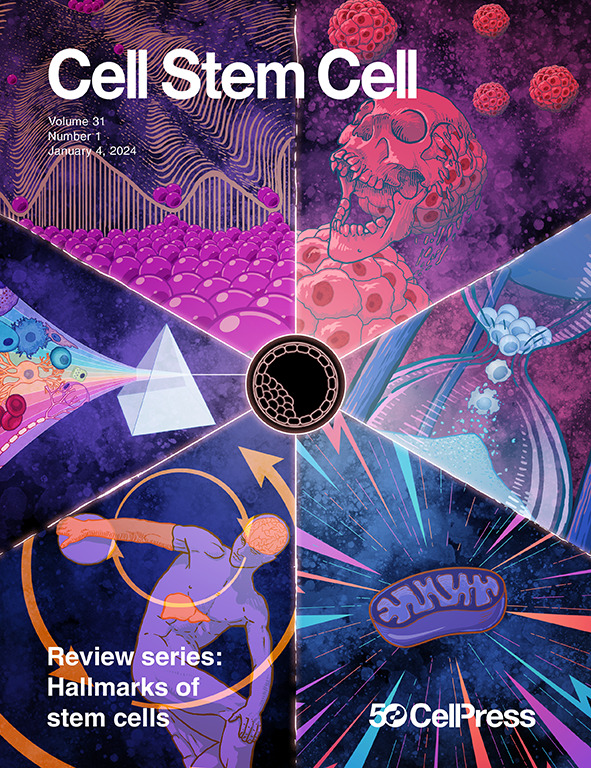An erythroid-biased FOShi hematopoietic multipotent progenitor subpopulation contributes to adaptation to chronic hypoxia
IF 19.8
1区 医学
Q1 CELL & TISSUE ENGINEERING
引用次数: 0
Abstract
Hypoxia imposes notable stress on organisms and even causes tissue damage; however, the cellular and molecular mechanisms underlying hypoxic adaptation and maladaptation are elusive. Here, we performed single-cell RNA sequencing to analyze hematopoietic stem and progenitor cells (HSPCs) and erythroid cells in a mouse model of high-altitude polycythemia (HAPC) mimicking long-term high-altitude hypoxia exposure. We identified a distinct erythroid-biased multipotent progenitor subset, FOShi MPP, characterized by a unique responsiveness to interferon (IFN) signaling, which expands under hypoxia conditions. This subset rapidly responds to hypoxia during re-ascent by sustaining low methylation of erythroid-priming genes, suggesting a memory function in HSPCs for faster acclimatization. Additionally, erythroid cells in HAPC mice had active metabolic and autophagic activity, as well as abundant CD47 expression that prevented the phagocytosis of erythrocytes. Finally, CD47 blockade and/or IFNα treatments alleviated erythrocytosis in HAPC mice. These approaches might constitute promising therapeutic strategies for HAPC.

偏红细胞的 FOShi 造血多能祖细胞亚群有助于适应慢性缺氧
低氧对生物体造成显著的压力,甚至导致组织损伤;然而,低氧适应和适应不良的细胞和分子机制却难以捉摸。在这里,我们进行了单细胞 RNA 测序,分析了模拟长期高海拔缺氧的高海拔多血细胞症(HAPC)小鼠模型中的造血干细胞和祖细胞(HSPCs)以及红细胞。我们发现了一个独特的红系多能祖细胞亚群--FOShi MPP,其特点是对干扰素(IFN)信号具有独特的反应性,并在缺氧条件下扩增。该亚群通过维持红细胞诱导基因的低甲基化,在再萌发过程中迅速对缺氧做出反应,这表明 HSPCs 具有记忆功能,能更快地适应缺氧环境。此外,HAPC 小鼠的红细胞具有活跃的新陈代谢和自噬活性,以及丰富的 CD47 表达,从而阻止了红细胞的吞噬。最后,CD47 阻断和/或 IFNα 治疗可减轻 HAPC 小鼠的红细胞增多症。这些方法可能是治疗 HAPC 的有前途的策略。
本文章由计算机程序翻译,如有差异,请以英文原文为准。
求助全文
约1分钟内获得全文
求助全文
来源期刊

Cell stem cell
生物-细胞生物学
CiteScore
37.10
自引率
2.50%
发文量
151
审稿时长
42 days
期刊介绍:
Cell Stem Cell is a comprehensive journal covering the entire spectrum of stem cell biology. It encompasses various topics, including embryonic stem cells, pluripotency, germline stem cells, tissue-specific stem cells, differentiation, epigenetics, genomics, cancer stem cells, stem cell niches, disease models, nuclear transfer technology, bioengineering, drug discovery, in vivo imaging, therapeutic applications, regenerative medicine, clinical insights, research policies, ethical considerations, and technical innovations. The journal welcomes studies from any model system providing insights into stem cell biology, with a focus on human stem cells. It publishes research reports of significant importance, along with review and analysis articles covering diverse aspects of stem cell research.
 求助内容:
求助内容: 应助结果提醒方式:
应助结果提醒方式:


